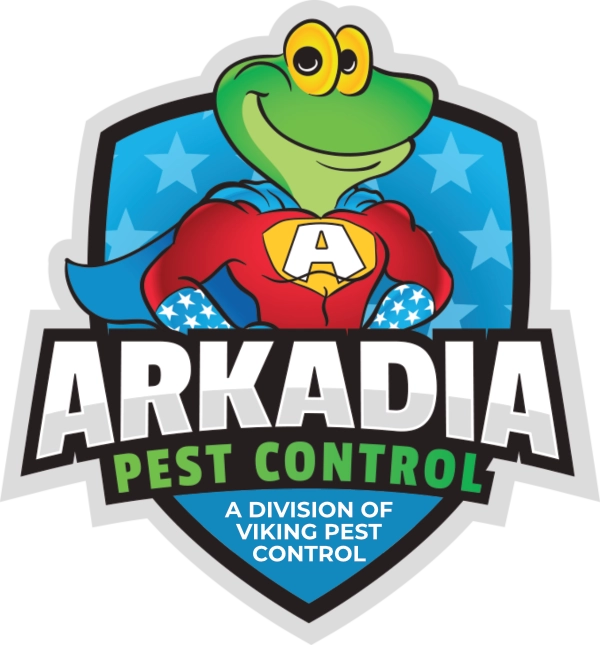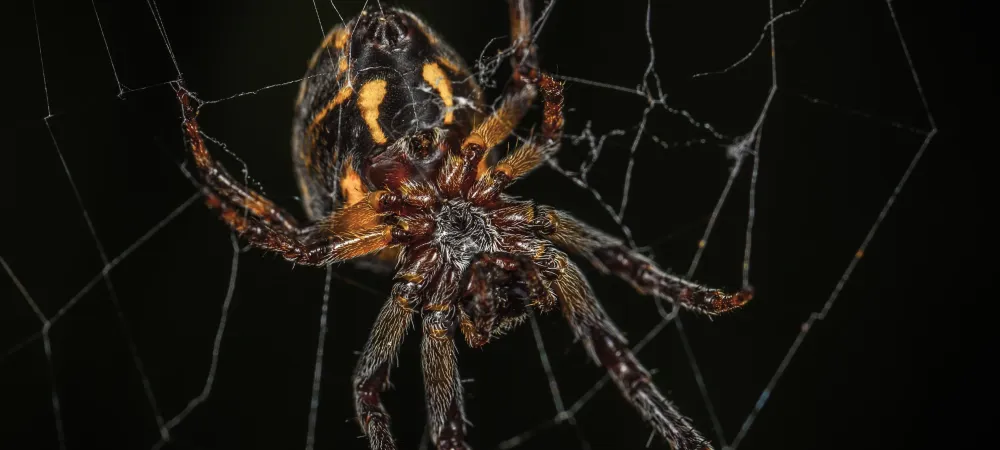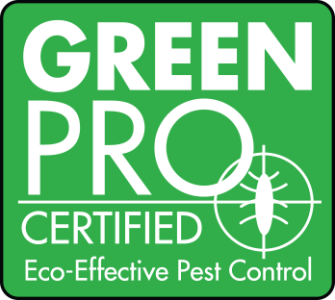Spiders seek out indoor spaces for the same reasons that humans do. They need warmth, protection from the elements, food, and water. They enter buildings through doors and windows or small cracks and openings. They can ride in on firewood or other items from outside. If they survive long enough to reproduce, you’ll have even more spiders sharing your space.
The Brown Recluse Spider
This one of the scariest species of spider on the planet. Its toxic bite can cause necrosis of the flesh and other serious health problems. In some cases, recluse bites have even caused death. It’s one of the few spiders in North America that has the power to kill.
If you’re eyeing your surrounding area in search of a small brown spider right now, don’t worry. Much like the name suggests, the recluse likes to stay far away from humans. You’re unlikely to get bit unless you stumble upon a lair, which consists of an asymmetric web. A recluse uses its web as a resting place rather than a hunting ground.
You can recognize a brown recluse by the marking on its back, which looks like a brown violin.
Black Widow Spider
This is another spider with a scary reputation. The bite isn’t usually as severe as a bite from a recluse, but black widows are more common and more likely to bite. They’re also among the scariest looking. You can recognize a black widow by its bulbous black abdomen with a red marking that looks like an hourglass.
Black widows will set up shop anywhere they can. They love dark, cool spaces, such as garages and storage sheds. They sometimes create webs near doorways, where porch lighting attracts insects they can feed on. You can recognize a widow web from its sticky texture. The webs are usually low to the ground.
A bite from a black widow isn’t usually fatal, but the venom can be more powerful than a rattlesnake’s. It’s important to seek treatment for a widow bite right away. The reaction can sometimes cause breathing problems and other serious effects. If the bitten individual has a compromised immune system, the bite could even be deadly. If you stop the reaction as soon as possible, it’s less likely that there will be serious consequences.
Wolf Spider
Compared to the first two spiders on our list, the wolf spider is an innocent little species. These large spiders, which can grow to be over an inch long, have a hairy appearance and look a lot like small tarantulas. Unlike many spiders, they don’t spin webs. Instead, they live in the ground.
Wolf spiders are more likely to hang out in your garden or garage than inside your home, but one may occasionally find its way inside. They are unlikely to attack humans, so if you find one, you might want to consider taking it out to the yard where it can help keep other pests in check.
Yellow Sac Spider
These colorful spiders are about a quarter of an inch long. Rather than webs, they spin silky sacs in the little nooks and crannies of your home. Look for the sacs behind shelves, in corners, and behind doors.
While this species isn’t poisonous, it does have a mean set of jaws. This is a spider that can sometimes be aggressive and bite without provocation. The spider’s bite can sting badly, but it won’t cause any long-term damage.
House Spider
The term “house spider” can refer to any number of non-poisonous species that are common in New Jersey and the rest of North America. These harmless spiders are also sometime referred to as garden spiders.
There’s no need to fear house spiders. They aren’t at all aggressive. In fact, they’ll often play dead when faced with a threat. They range in size but are usually less than half an inch long. Their colors can range from dark browns to grays or a mix of varying dark shades. Like wolf spiders, house spiders can help homeowners by eating other household pests.
You can help keep spiders at bay by maintaining a clean home and yard. By avoiding clutter, the spiders will be more likely to go elsewhere. If you’re dealing with a serious infestation, it’s wise to call the experts for help. DIY tricks might work for a minor problem, but only the professionals can handle a full-on spider invasion.
How To Prevent Spiders
- Trim tree branches, shrubs, and any overgrown vegetation that is touching the foundation and outside of your home.
- Move woodpiles more than 6 feet from the foundation of your home.
- Seal gaps and cracks in the foundation and exterior walls of your home.
- Place weather-stripping around exterior windows and doors.
- Place door sweeps on all exterior doors and replace any that are old or damaged.
- Replace ripped or damaged window and door screens to keep spiders from getting in.







